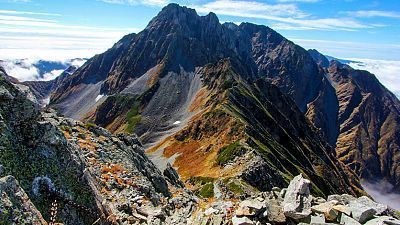One of Japan’s best hikes: Mt. Shirouma-dake
Among the countless mountain ranges covering over 70% of the country's surface, the Northern Japanese Alps hold a special place in the hearts of hikers in Japan. Craggy narrow ridgelines jutting above the clouds, colorful alpine flowers all around, panoramas of dramatic peaks and sweeping valleys: the Northern Alps are truly home to some of Japan's most spectacular scenery.
Of the many fantastic hikes that showcase this area's landscapes, one of the most captivating belongs to Mount Shirouma-dake. Mt. Shirouma, standing at 2932 meters, and right in the middle of Japan's deep snow country, is one of the few peaks in Japan that feature large year-round snow fields, in addition to boasting some of the best views of the Northern Alps.
Like many of the other highest peaks in Japan, Mt. Shirouma also hosts a handful of well-located and fully-provisioned mountain lodges, making it possible to do multi-day hikes without the need to carry tents.
And with these things in mind, I started off on a two-day hike to reach the summit of Mt. Shirouma and its two stunning neighbors, Mt. Shakushi-dake and Mt. Hakuba Yarigatake.
Day 1: Hakuba to Mt. Shirouma Summit
To reach the trailhead, I made my way to the small mountain town of Hakuba in the northeast corner of Nagano Prefecture. Hakuba is renowned in as a world-class skiing and snowboarding resort in winter, but during the hiking season from July to October, the town becomes a gateway to the trails of the nearby Northern Alps.
From the center of town, the trailhead is located beside the Sarukuraso Lodge (1250 meters above sea level), about a 30-minute bus or car ride (regular daily buses run to/from JR Hakuba Station in season).
Upon arriving, it's wise to register your hiking itinerary on the forms provided for hikers so that authorities can more easily find you in case of trouble.
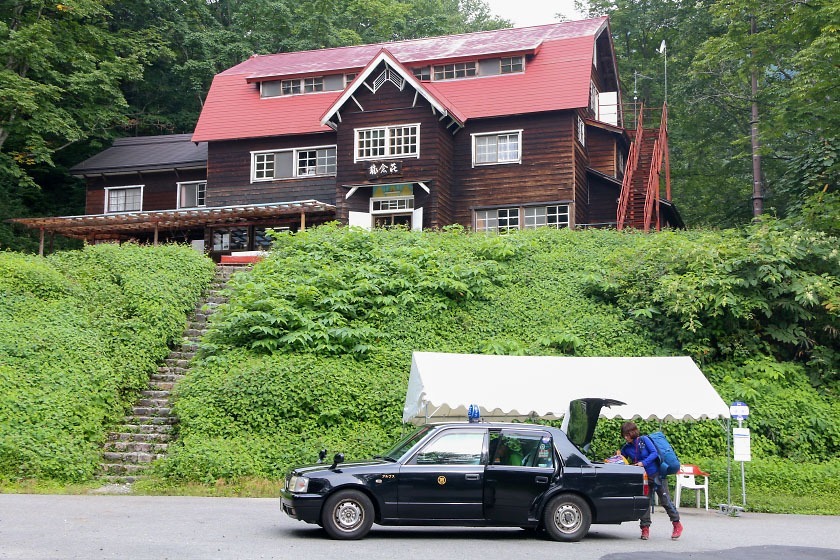
After writing down my information and buying a few last provisions at the lodge, I took my first steps onto the trail.
The first hour of hiking on the trail was pretty mild. The trail starts gently, leading through a patch of forest before joining a gravel path that eventually runs across several mountain streams.
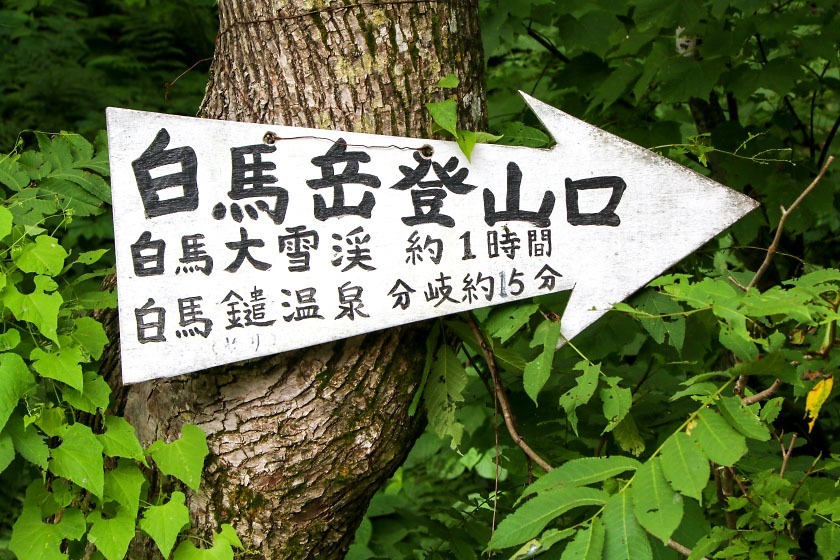
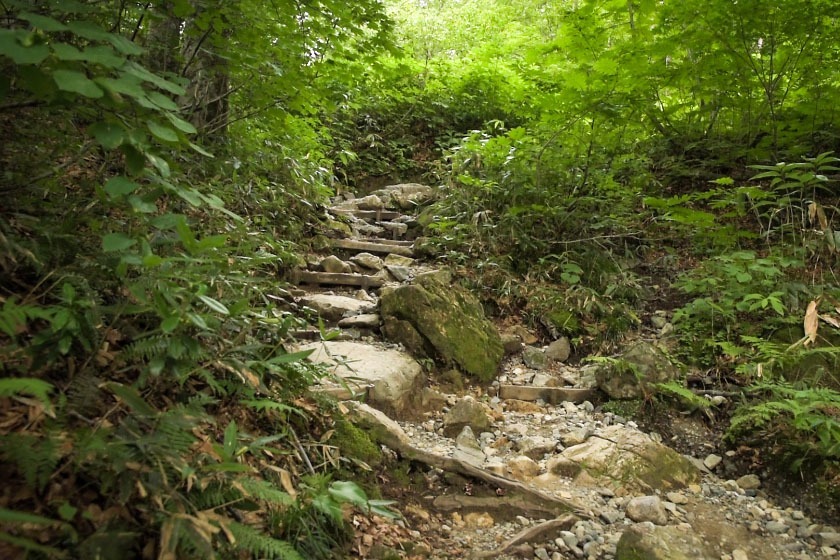
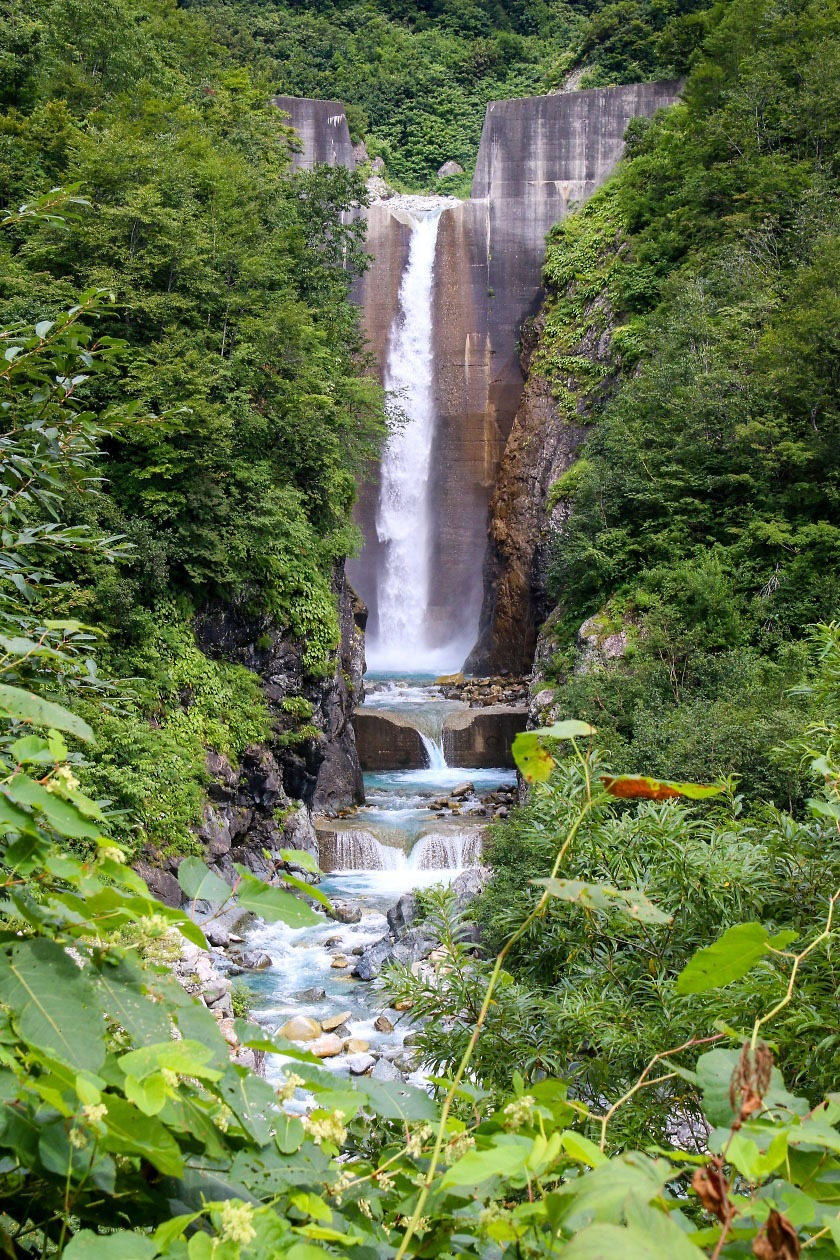
After a short hour or so, I came across a small mountain hut (Hakubajiri Lodge) at the base of a huge clearing. Just beyond the hut, towering up into a layer of clouds, was the massive Daisekkei. The Daisekkei (literally "big snowy valley") is a mountain valley carved into the Shirouma massif that becomes so densely packed with vast amounts of snow each winter that it never completely melts in the warmer seasons, forming a perennial snow field.
And that otherwordly landscape was my path to the summit.
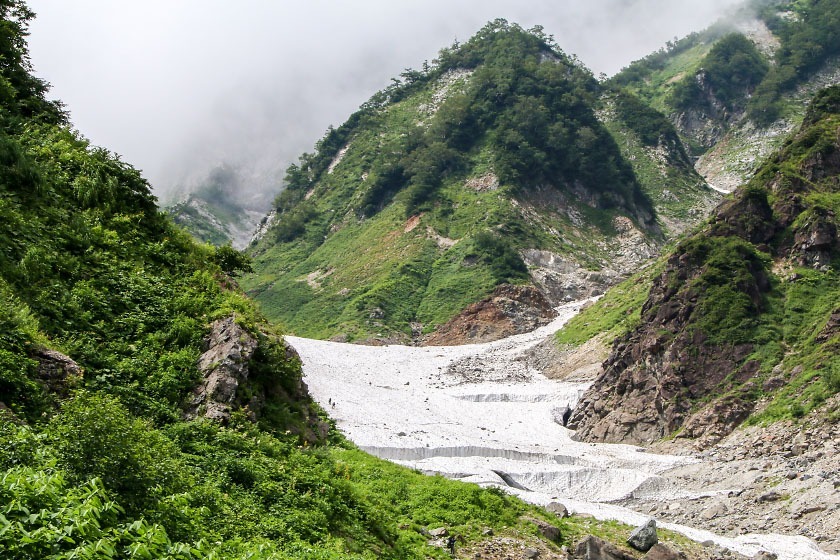
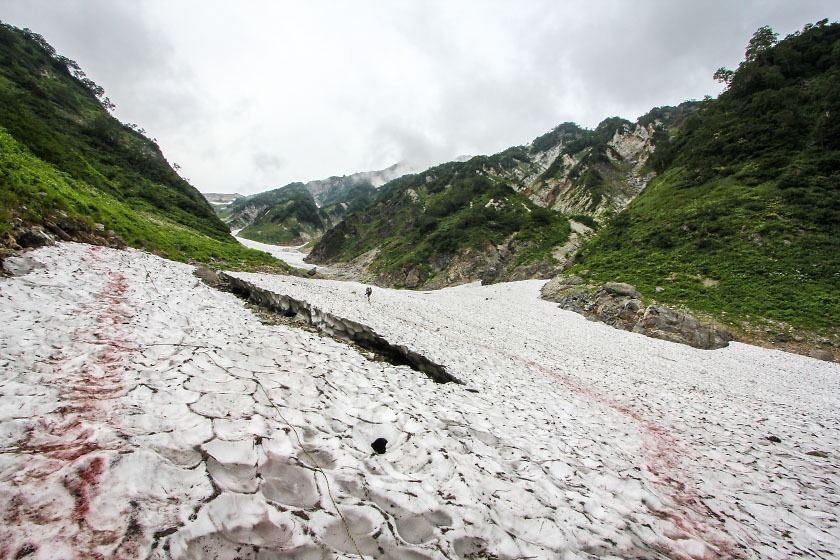
Before attempting the Daisekkei, though, I first made sure to pop into the Hakubajiri Lodge to check the snow conditions for the day. Rock slides are not an uncommon occurrence in this valley, and shouldn't be taken lightly: in 2008, for example, 3 people died here in a landslide during heavy rains. Use extreme caution or consider postponing ascending in inclement weather.
The hut also sells light 4-point crampons for 1000 yen that can be strapped to hiking boots for a less slippery ascent on the slick snow. While those with confident footing and sturdy boots may find them unnecessary, I found that they made my movement pretty efficient.
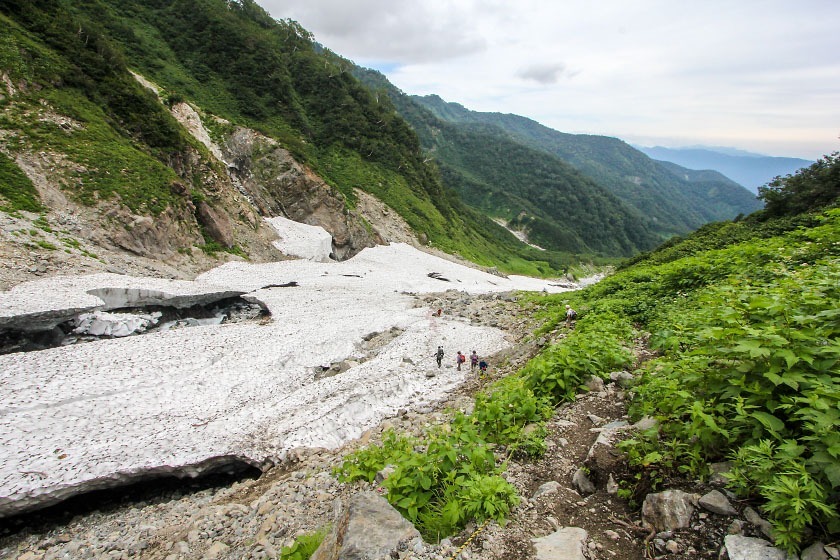
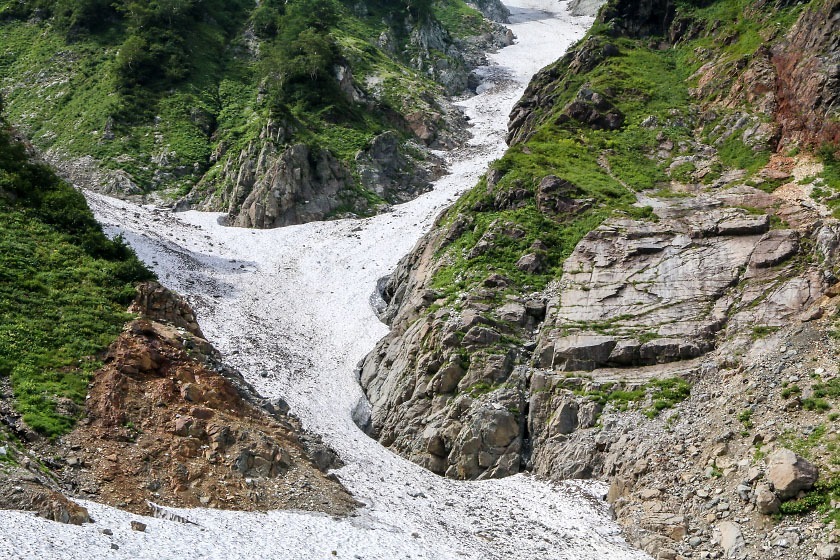
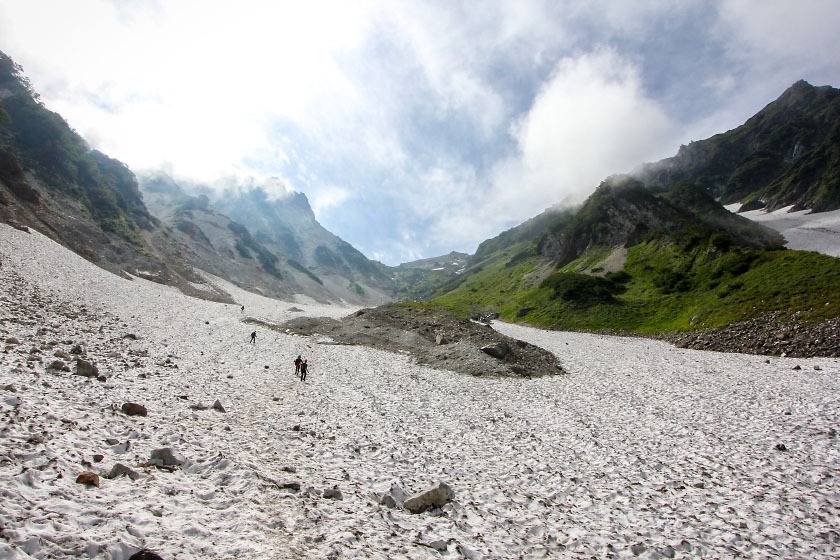
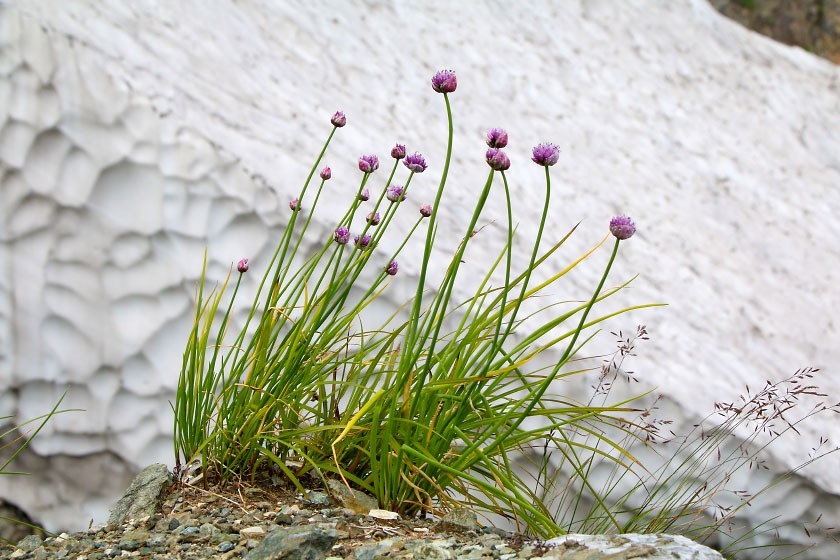
The slow march up the snow lasted about 2 hours (2–3 is normal depending on your pace), after which the trail resumed above the treeline (around 2000 meters in this area). From the top of the Daisekkei the trail climbs steeply, gaining about 500 meters of elevation in a short distance. But just under the ridgeline, the plantlife seemed to explode with wildflowers and interesting alpine shrubs and grasses. Stopping to smell the flowers makes an excellent excuse to catch your breath once in a while!
After another 1–2 hours from the top of the Daisekkei, I finally found myself standing on the narrow ridgeline of the Hakuba mountain range itself. And not a moment too soon: I made it just in time to take in the incredible views of the neighboring peaks before the clouds collecting in the valleys swallowed them up.
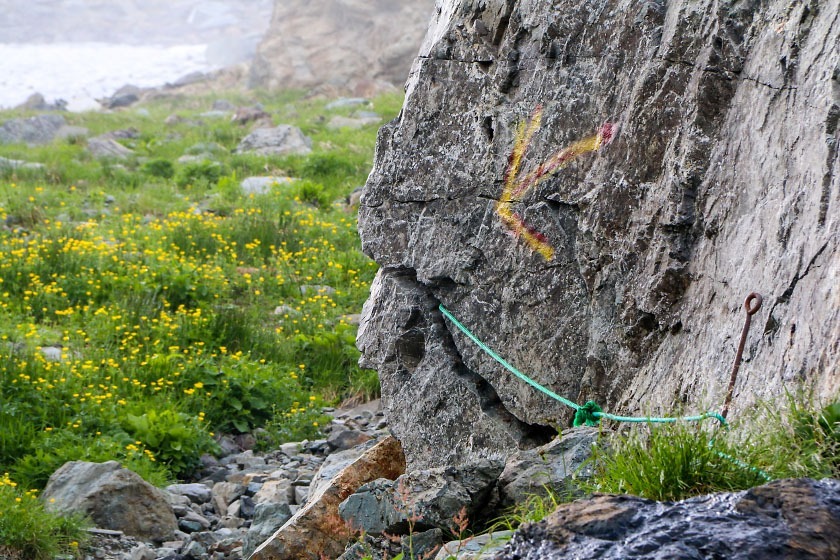
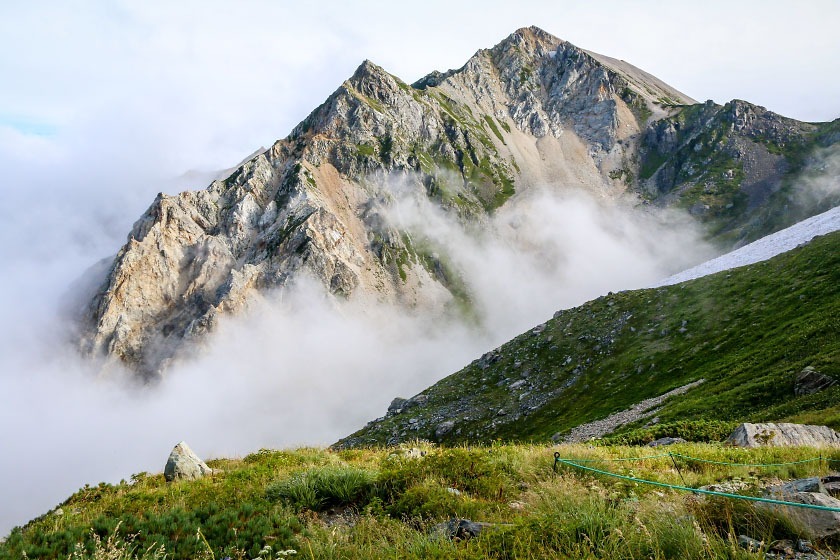
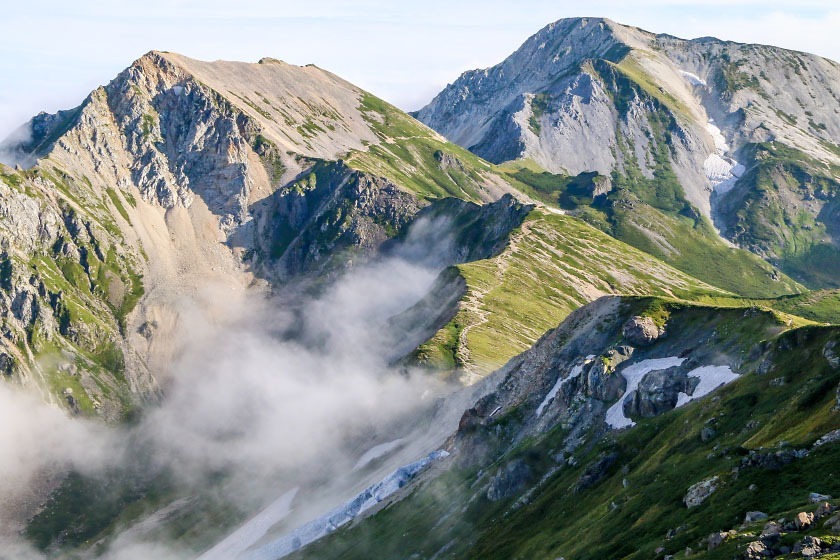
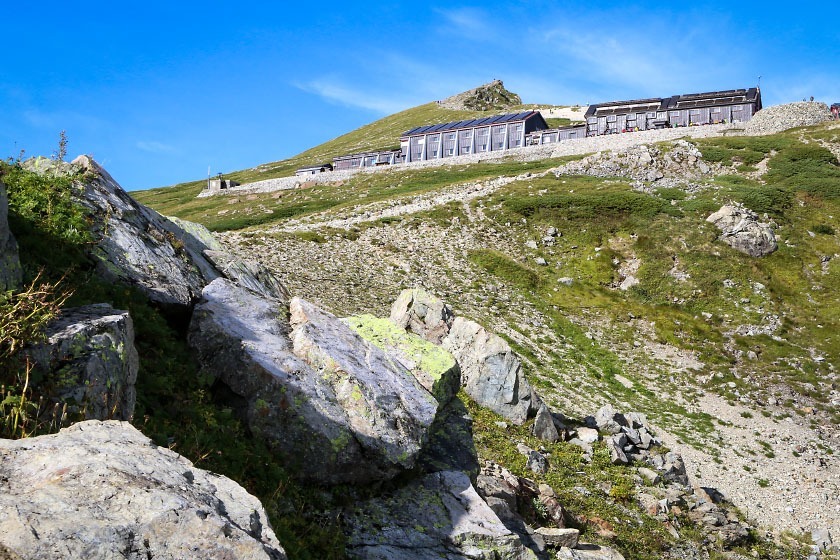
Once on the ridgeline, it would be pretty hard to miss the two massive buildings perched on top. The Hakuba Chojo Shukusha Lodge and Hakuba Sanso Lodge each can accommodate over 1000 guests (the former also has camping sites for 500 yen for those with tents), and are both conveniently located just a 15–30-minute walk from the summit of Mt. Shirouma.
Mountain huts like Hakuba Sanso, where I stayed that night, are a great feature of mountain hiking in Japan. Guests can normally request a hot meal (dinner, breakfast, or both—and sometimes even a to-go bento for the next day) and are provided with a futon and warm blankets, usually in a dormitory-style room. Prices range from around 7500-12,000 yen/night with meals (4000-8000 without), and most places also provide drinking water, toilets, and sell other provisions (usually including alcoholic beverages, for those interested).
Advance reservations are always a good idea (especially on weekends or holidays during peak hiking season), but are not always necessary as long as space is available.
After checking in and enjoying a lovely meal, I scurried outside and up the remaining 100 meters to the summit itself to try and catch the sunset. Sadly, clouds rolled in just before I reached the top, obscuring the scenery below, but I enjoyed my sense of accomplishment nonetheless and trundled back down to the lodge to relax and get some sleep for the big day ahead.
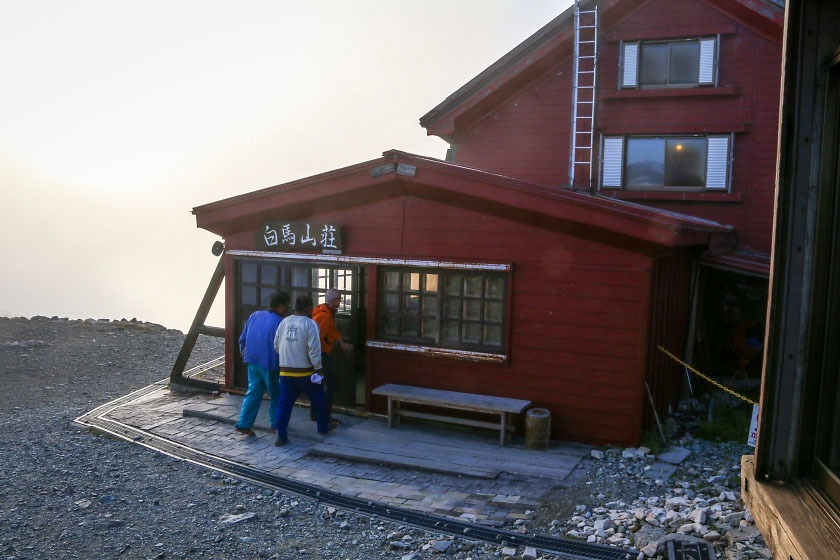
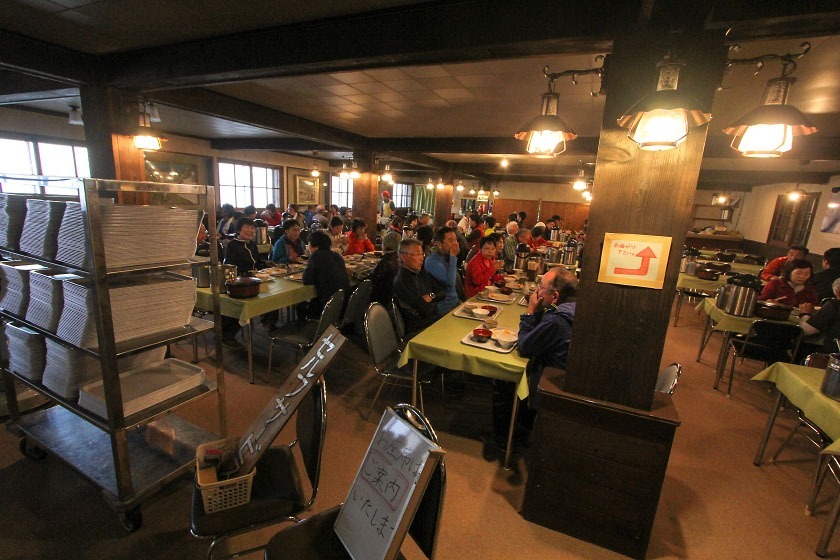
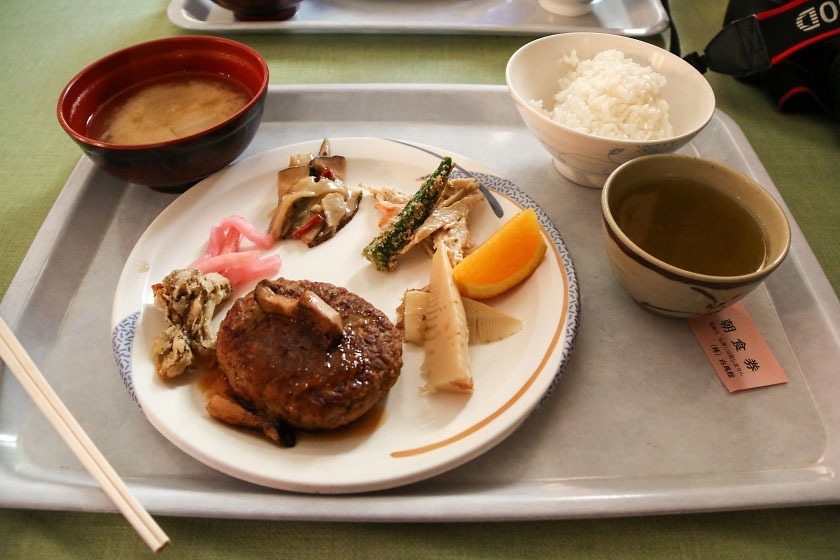
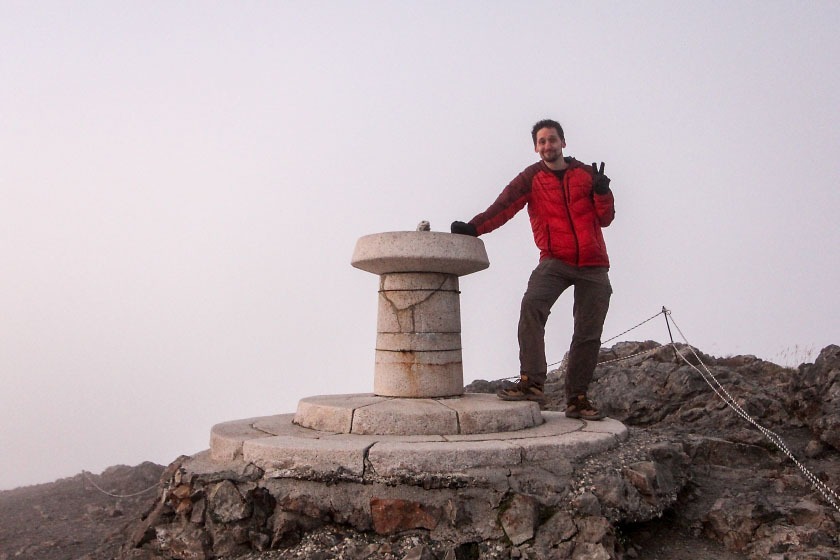
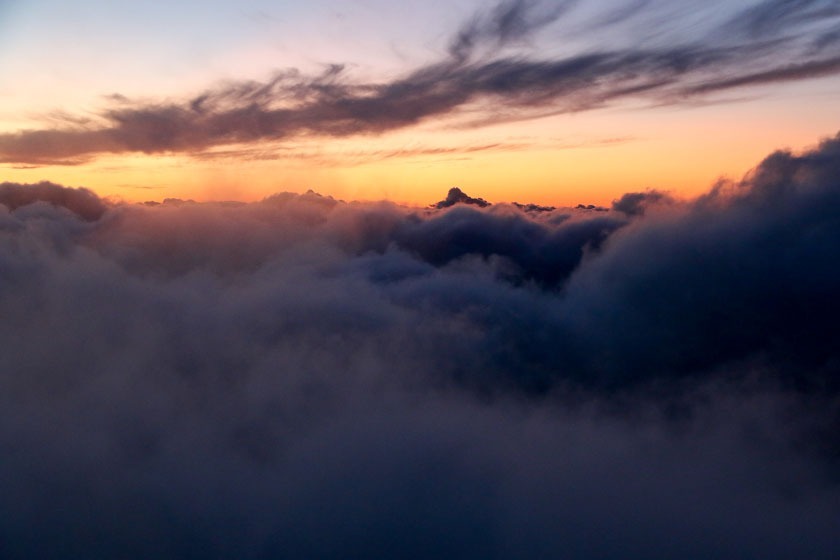
Day 2: Hakuba Yarigatake and Yari Onsen
At 3:30am the next morning, I got up donned my warmest gear and headlamp and made my way back up to the summit in the early pre-dawn light. Along with a slowly growing crowd of other hikers, I waited it out as the sky gradually brightened, illuminating the landscape below.
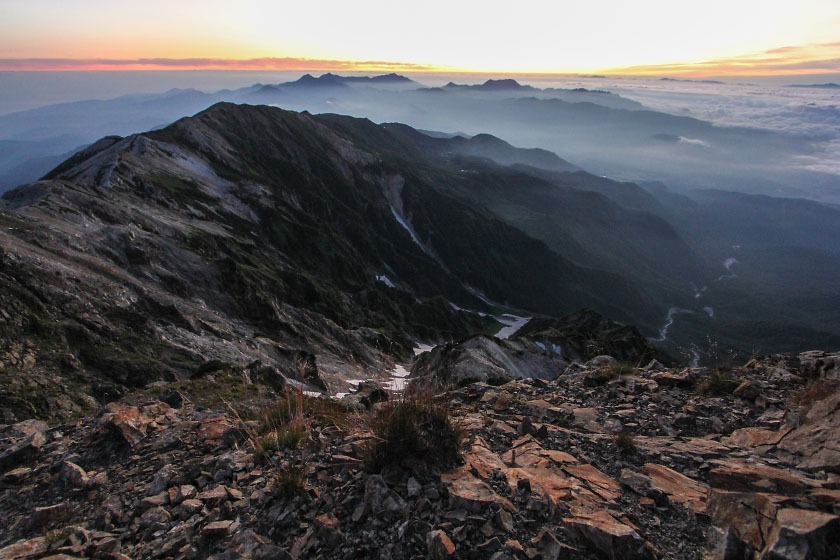
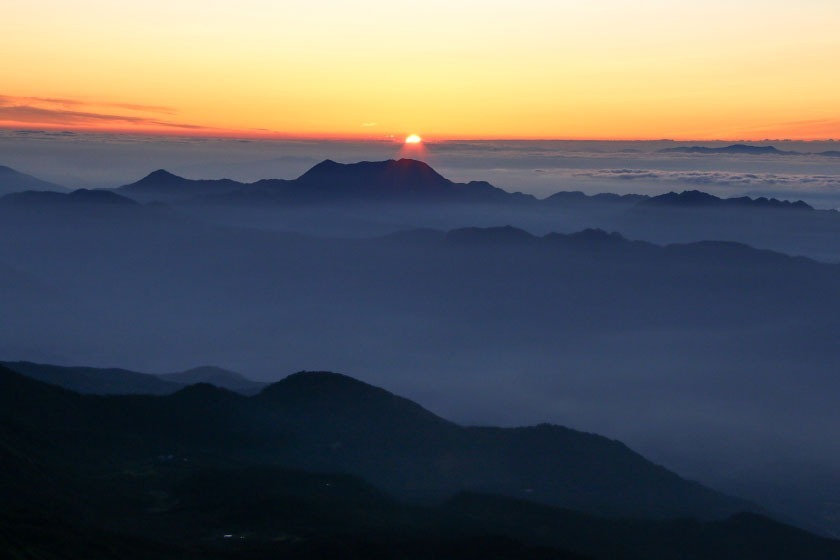
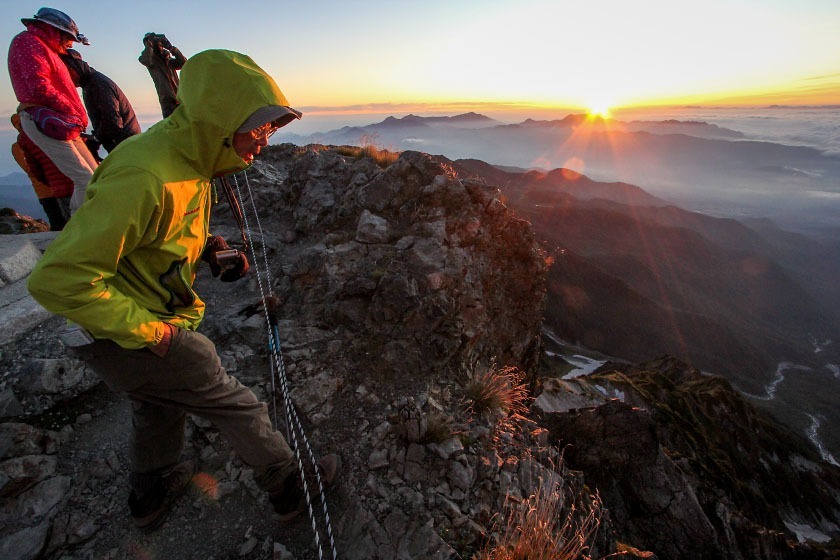
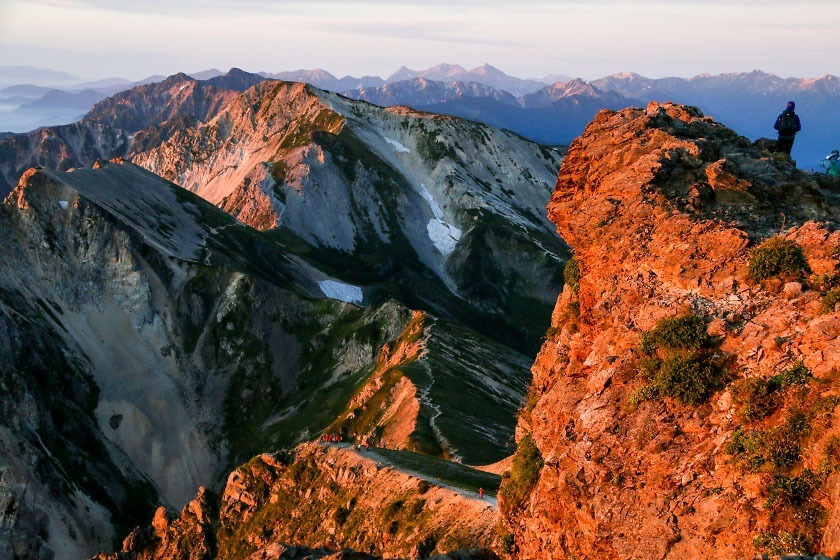
After soaking in the stunning views from the summit, I made one last stop at the lodge for breakfast and coffee and set off along the ridgeline heading south toward my destinations for today: Mt. Shakushi-dake and Mt. Hakuba Yarigatake.
Blessed with beautiful sunny weather, I took a leisurely pace to simply soak in the incredible scenery around me. The trail was simply set on top of the ridge itself, following the bumpy contours of the mountains. And about an hour after leaving the lodge, I was at the top of Shakushi-dake (2812 meters), halfway to today's high point, Yarigatake.
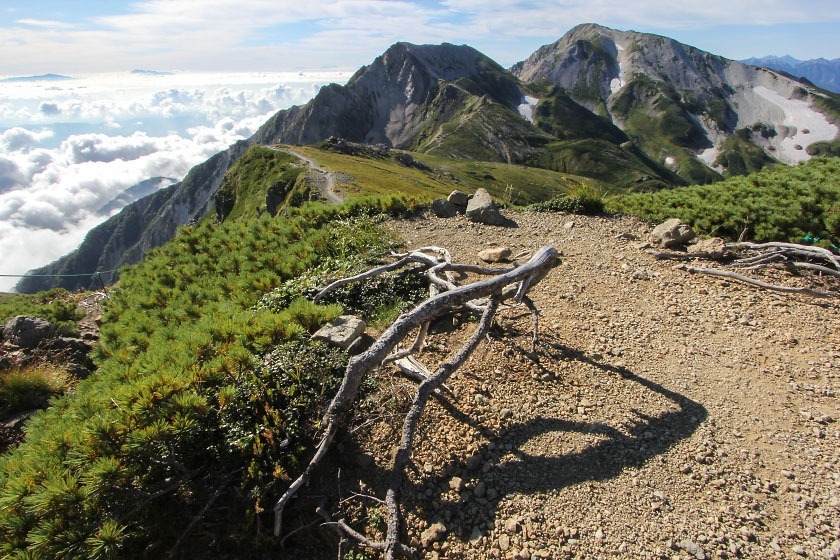
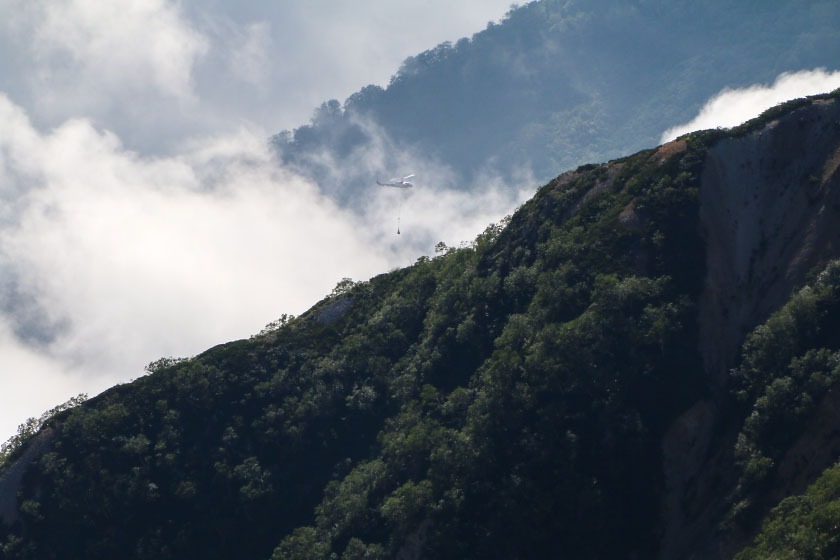
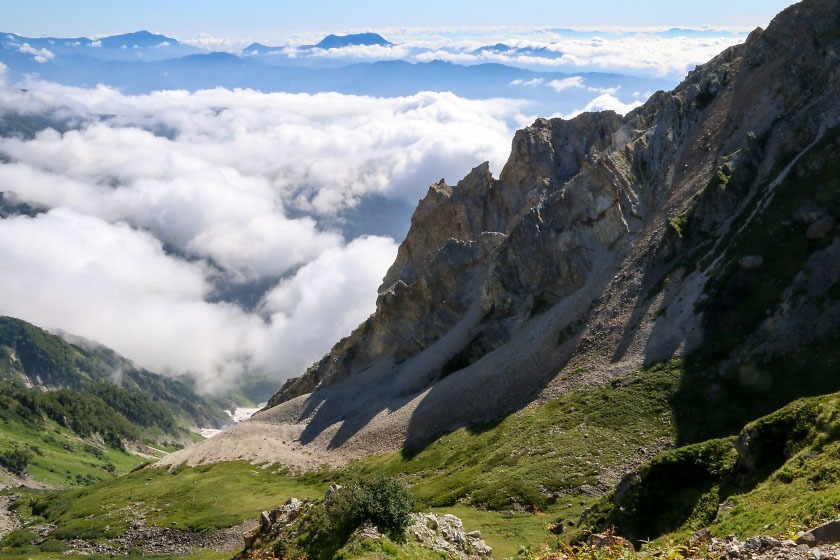
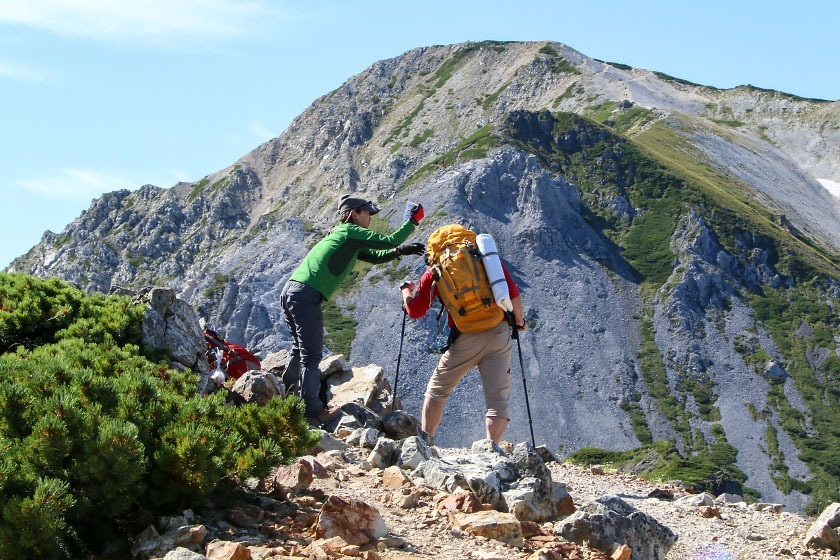
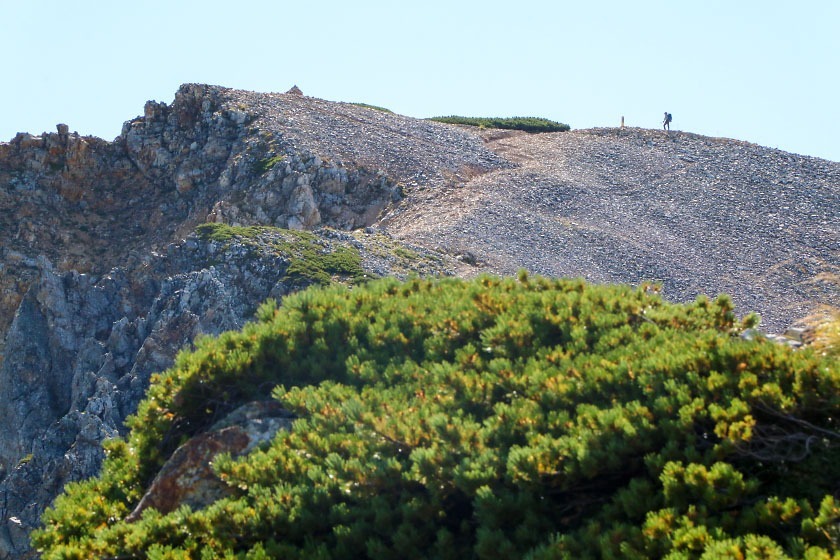
From Shakushi, it was a little less than an hour to the slender summit of Shirouma's tallest neighbor, Hakuba Yarigatake (2903 meters). Hakuba Yari (not to be confused with the pointy monolithic peak also called Mt. Yarigatake located near Kamikochi) affords some of the best views of Mt. Shirouma itself, as well as just some downright awesome vistas in general.
With a tight schedule to keep, I stayed long enough to snap some pictures and eat a snack, and then began the long descent back to the trailhead.
While many people opt to return the way they came via the Daisekkei, or continue south along the ridgeline to the other peaks of the Hakuba range, I decided to descend via the slopes of Yarigatake. The path offers more lovely scenery and snow fields, but also a rare feature at an elevation this high: an onsen!
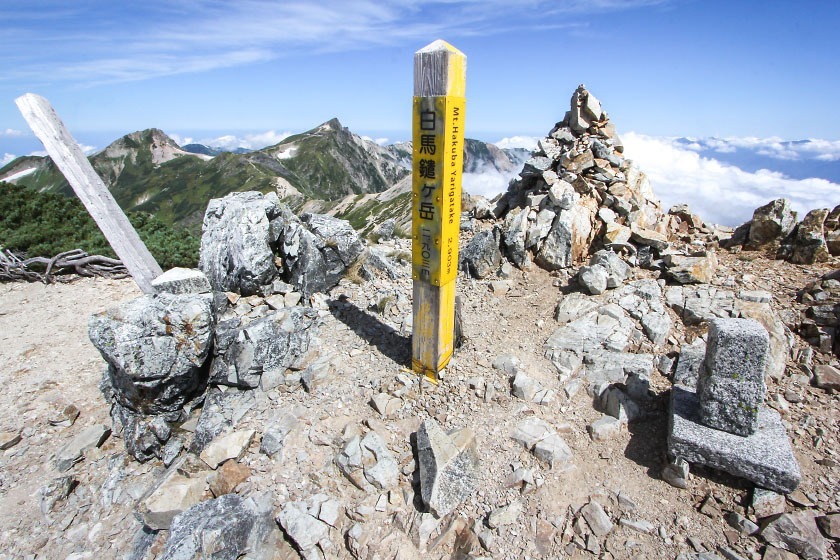
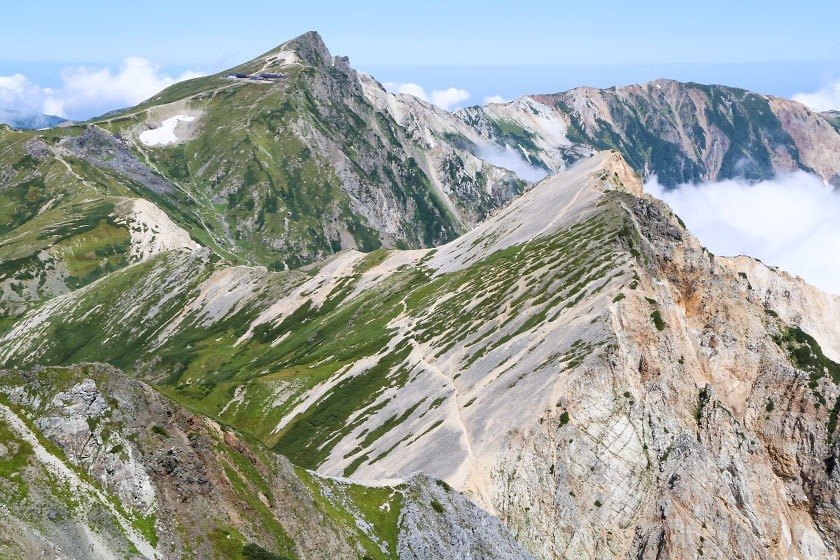
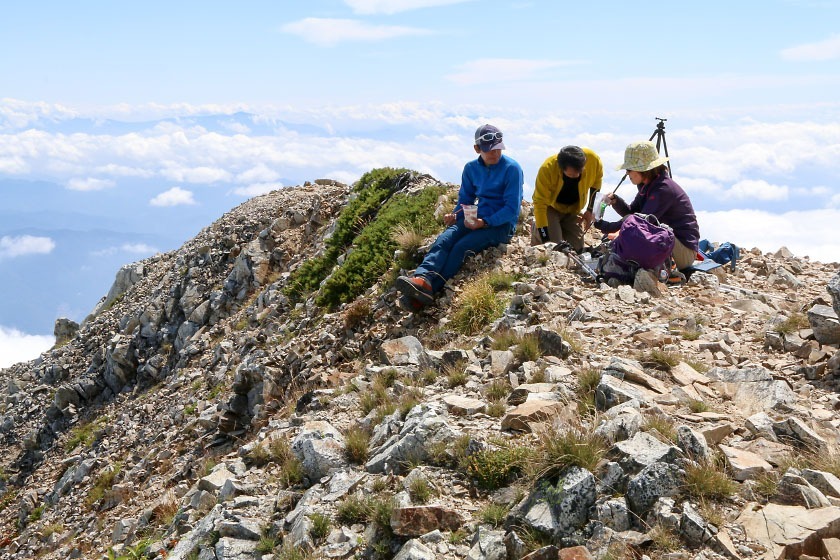
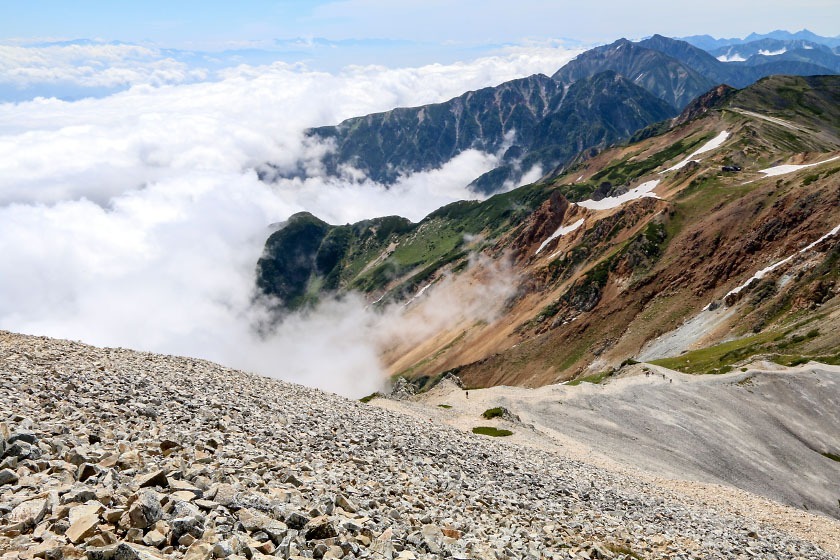
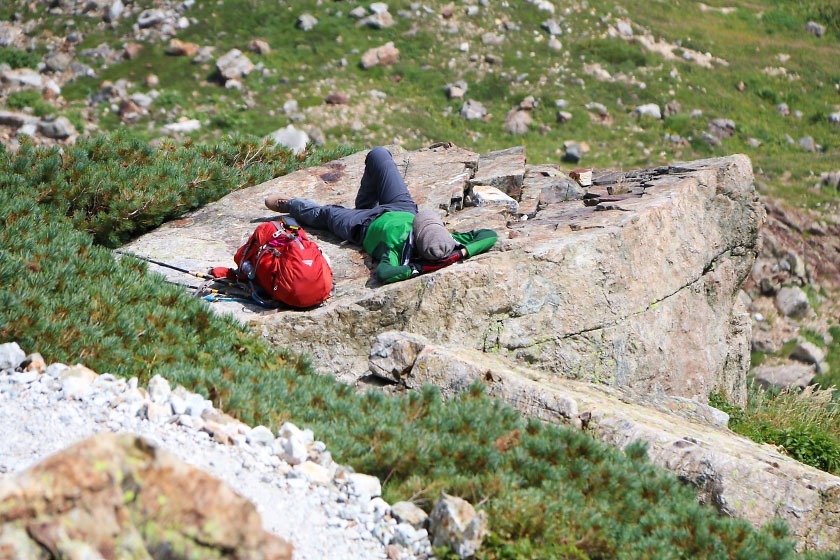
After dropping 800 meters from the peak of Yarigatake (about 1.5 hours), I made it to a small mountain lodge nestled between sheer cliffs and another smaller perennial snow patch: Hakuba Yari Onsen. At 2100 meters above sea level, this lodge is home to one of the highest natural hot springs in all of Japan. For just 1000 yen, hikers can soak in a 44°C open air bath overlooking the mountain valleys below (or for about 9000 yen, just stay the night as well!).
Of course I couldn't pass up the opportunity and enjoyed the chance to relax in the bath for as long as I could. But to make sure I made it down before dark, I was off, allowing for about 2-3 hours (or longer) to descend all the way back to the Sarukura Lodge at the trailhead.
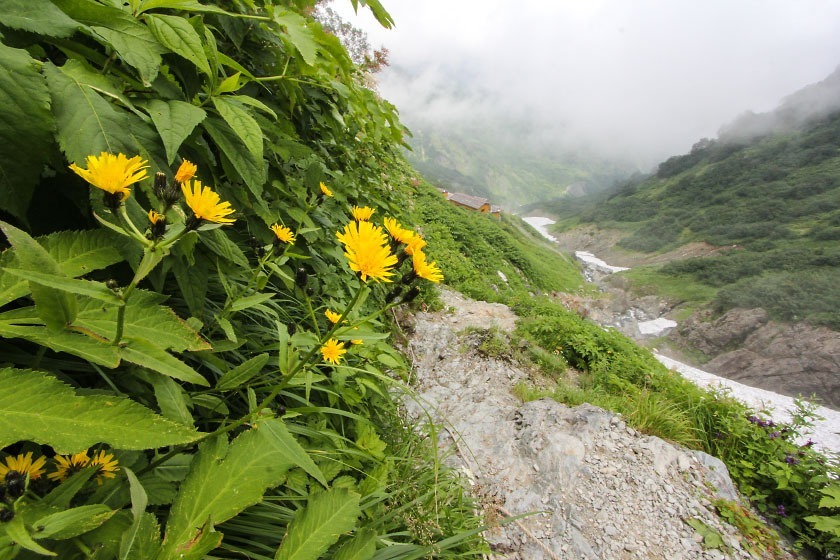
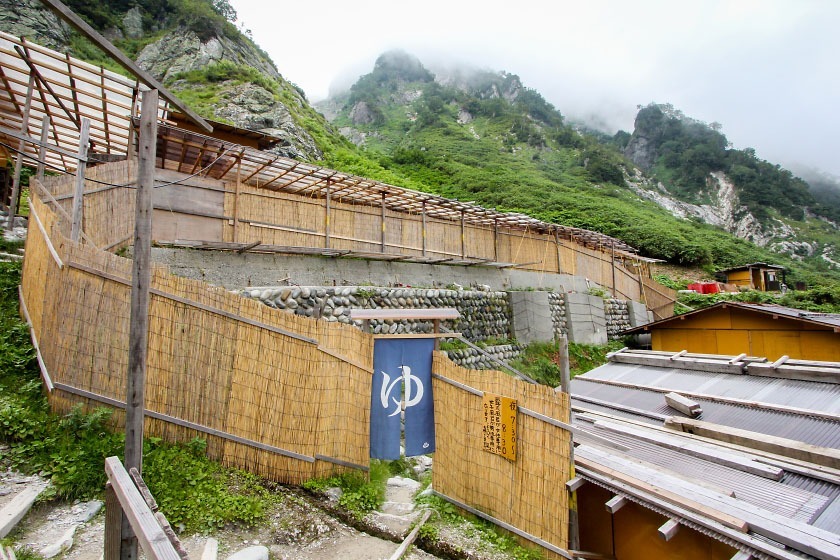
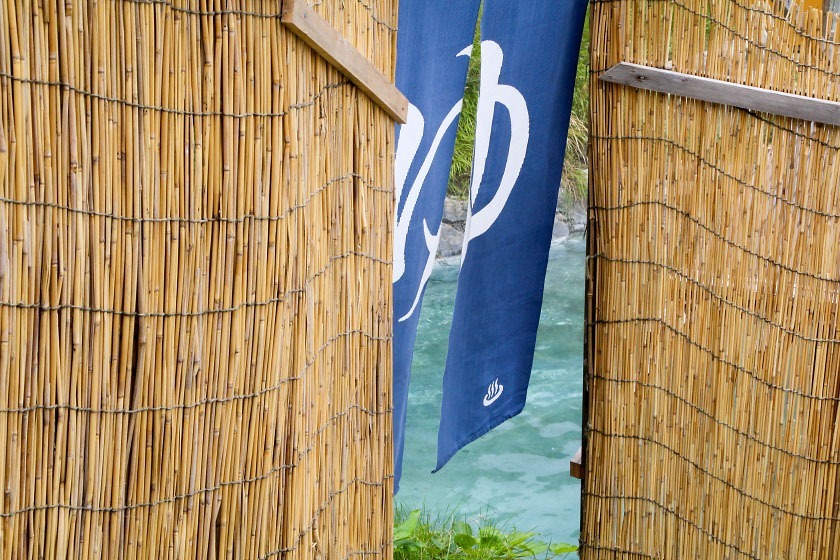
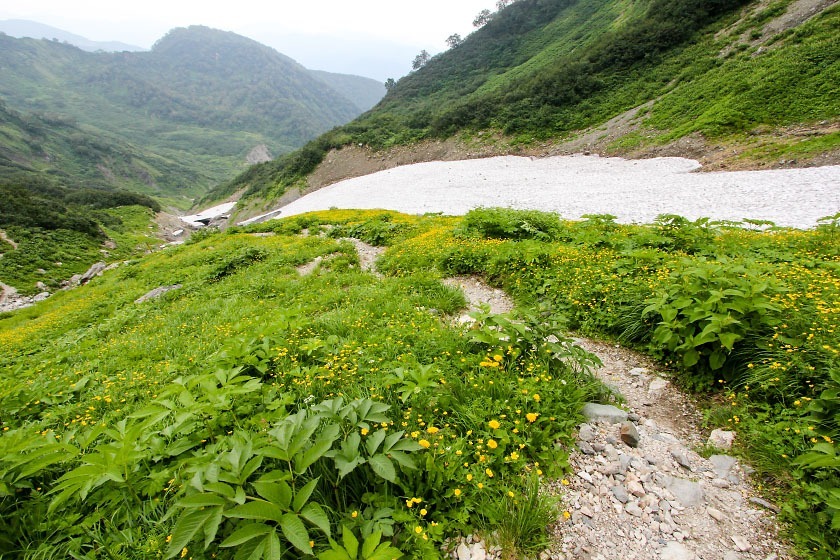
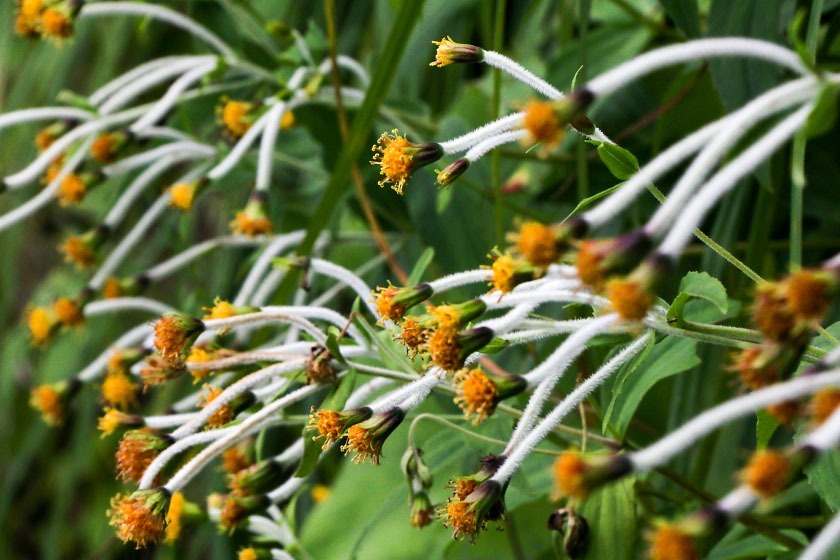
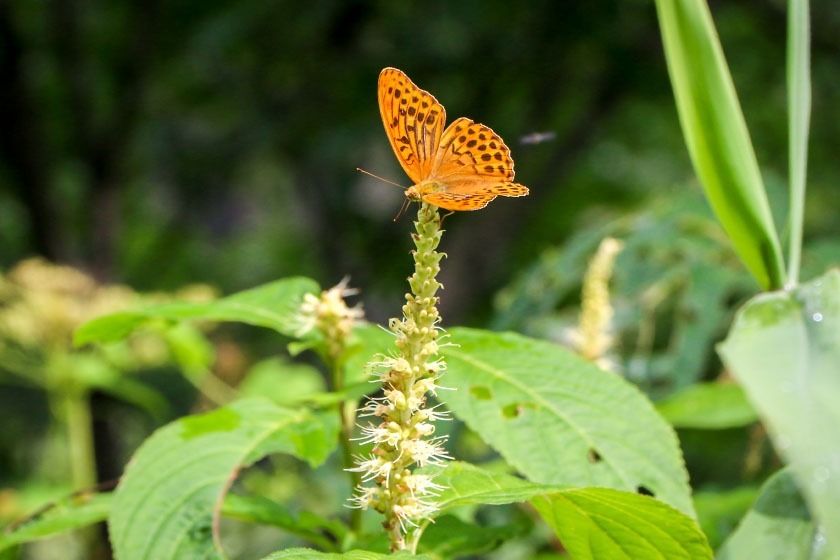
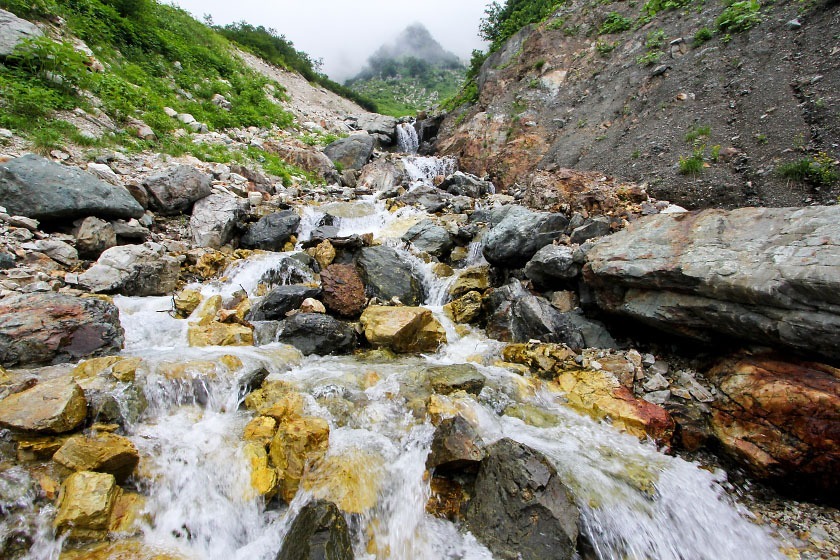
And after a long, hard hike, I was finally back at Sarukura Lodge, satisfied after a fantastic experience among the peaks.
This hike can be done safely any time during the main hiking season between July and October. While many of the mountain huts are open as early as April, large amounts of snow linger into spring, and heavy rains in June and early July can cause dangerous conditions, so take extra care for avalanches and rock slides. Hiking between mid-November and early April will mean full winter conditions, so only attempt it with proper mountaineering gear and training.

